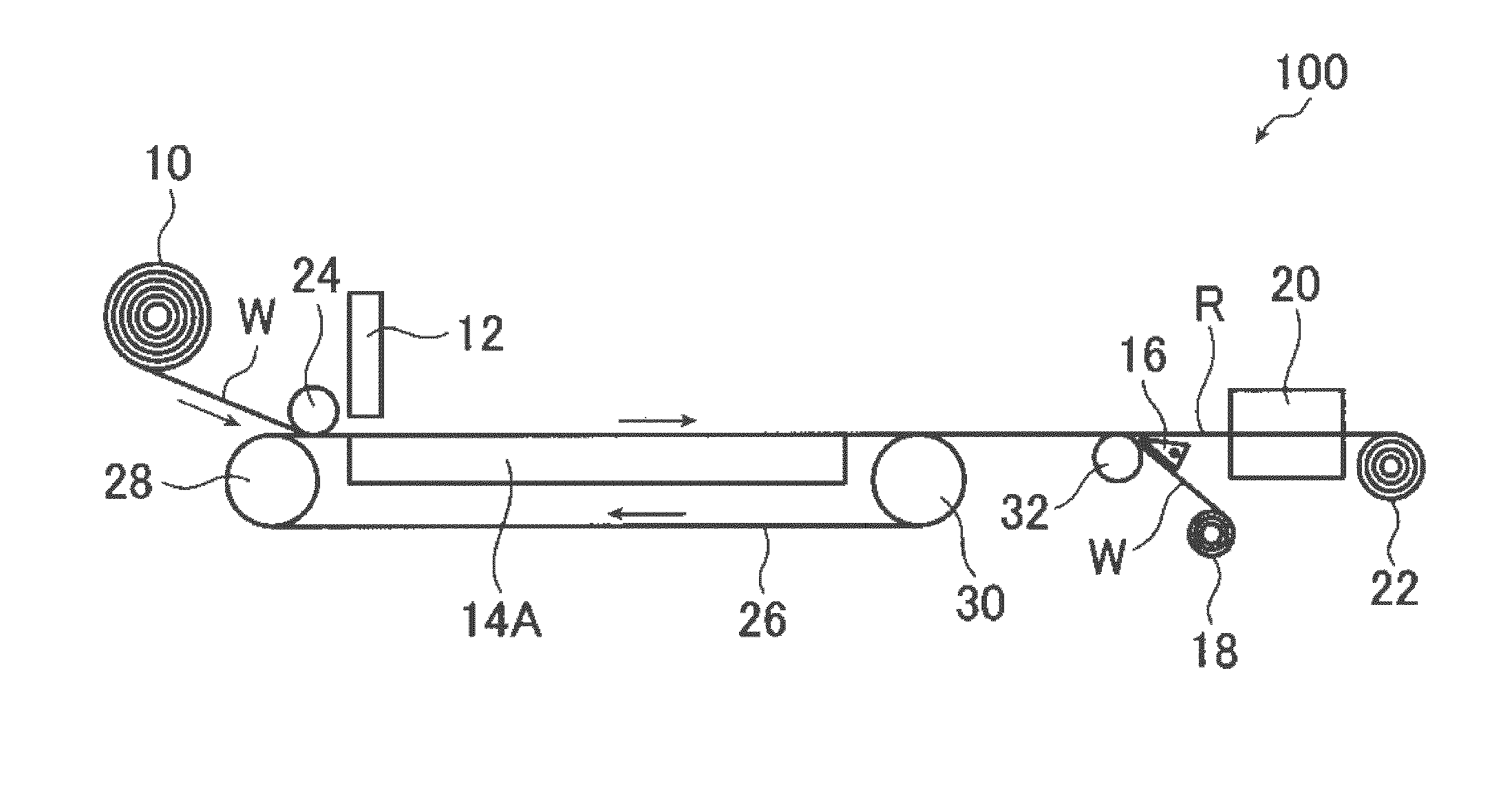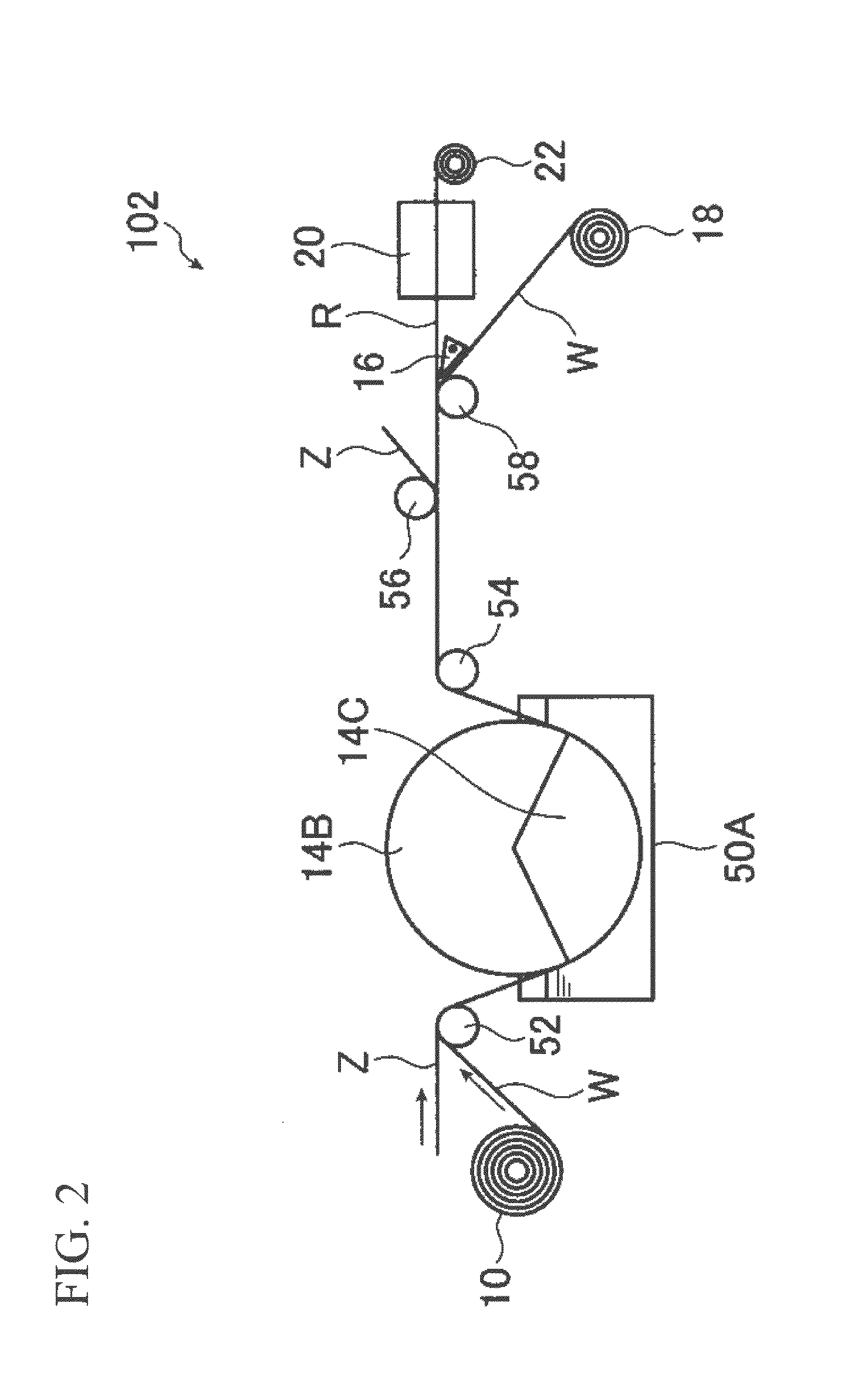Method for producing cellulose-fiber flat structure
- Summary
- Abstract
- Description
- Claims
- Application Information
AI Technical Summary
Benefits of technology
Problems solved by technology
Method used
Image
Examples
production example 1
Cellulose-Fiber Flat Structure Production 1
[0233]The filter material described below was fitted in a filter holder for reduced-pressure filtration (KG-90 (diameter: φ90 mm), manufactured by Advantec MFS, Inc.). Subsequently, the fine cellulose-fiber dispersion produced above was diluted with demineralized water to prepare 150 g of a dispersion having a cellulose fiber concentration of 0.13% by weight, and filtering was then started under reduced-pressure conditions (−0.09 MPa). Immediately after starting filtering, 30 ml of 2-propanol was added, and filtering was continued. Following the completion of the filtering operation, the deposit of fine cellulose fibers remaining on top of the filter material was peeled away from the filter material and press-dried for 5 minutes at a temperature of 120° C. and a pressure of 2 MPa, thus obtaining a cellulose-fiber flat structure.
production example 2
Cellulose-Fiber Flat Structure Production 2
[0234]The filter material described below was fitted in a filter holder for reduced-pressure filtration (KG-90 (diameter: φ90 mm), manufactured by Advantec MFS, Inc.). Subsequently, the filter material was wetted with approximately 10 ml of 2-propanol, reduced-pressure filtering was performed until the 2-propanol was no longer visible on the filter material, and the inside of the filtration bell jar was then returned to normal pressure. Subsequently, the fine cellulose-fiber dispersion produced above was diluted with demineralized water to prepare 150 g of a dispersion having a cellulose fiber concentration of 0.13% by weight, and filtering was then started under reduced-pressure conditions (−0.09 MPa). Immediately after starting filtering, 30 ml of 2-propanol was added, and filtering was continued. Following the completion of the filtering operation, the deposit of fine cellulose fibers remaining on top of the filter material was peeled aw...
example 1
[0235]A knitted fabric (average thread thickness: 2.0 d / f (50d / 25f), composition: 70% by weight polyester / 30% by weight nylon (splittable composite fiber), thickness: 370 μm, fabric weight: 180 g / m2) was subjected to a calender treatment to produce a filter material (5025SDY). The thickness of the thus obtained filter material (5025SDY) was 180 μm, and the water permeability was 17.0 ml / m2·s.
[0236]Using the thus obtained filter material, a cellulose-fiber flat structure was produced in accordance with the method described above in the production example 1. The initial tensile modulus of the filter material was 220 MPa. Further, in terms of the surface texture of the cellulose-fiber flat structure, only surface texture derived from the knitted fabric was confirmed (asperity: 45 μm, pitch: 168 μm), and no surface texture derived from the net or the like was confirmed, indicating no transfer of the support texture. The results are shown in Table 1. The dispersion was poured onto the su...
PUM
| Property | Measurement | Unit |
|---|---|---|
| Time | aaaaa | aaaaa |
| Thickness | aaaaa | aaaaa |
| Thickness | aaaaa | aaaaa |
Abstract
Description
Claims
Application Information
 Login to View More
Login to View More - R&D
- Intellectual Property
- Life Sciences
- Materials
- Tech Scout
- Unparalleled Data Quality
- Higher Quality Content
- 60% Fewer Hallucinations
Browse by: Latest US Patents, China's latest patents, Technical Efficacy Thesaurus, Application Domain, Technology Topic, Popular Technical Reports.
© 2025 PatSnap. All rights reserved.Legal|Privacy policy|Modern Slavery Act Transparency Statement|Sitemap|About US| Contact US: help@patsnap.com



